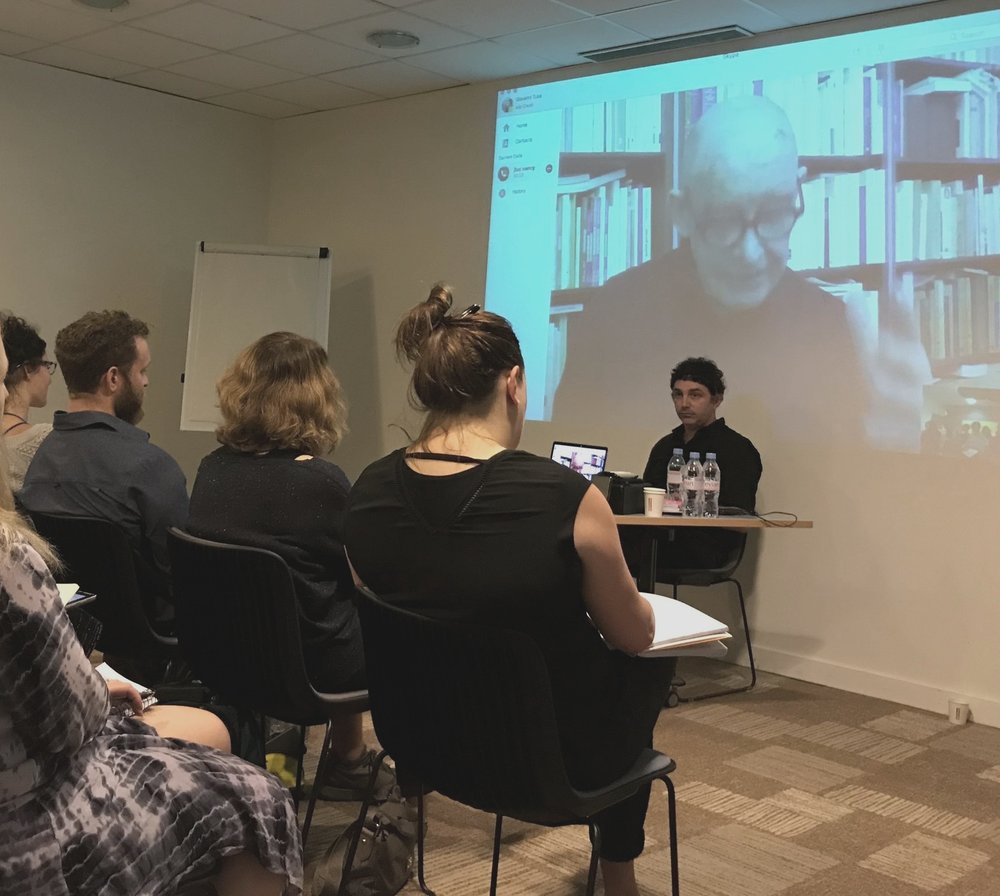The Intertextual and Dialogic of Time
December 19, 2018
by Samuel W. Kochansky, Cohort ’18
At the summer residency in Paris, as we experienced our “Happening” with philosopher Jean-Luc Nancy, initially, we were caught in a vortex of ontology and existentialism—where are we and what is the state of our being? But further through the recitation, I began to realize Nancy is not talking existentially; he is talking about time.

Yesterday, today, and tomorrow are variables that are non-sequiturs. This relative temporality must be mastered to give consistency to our existence. Or does it? As we disentangle the ‘now’ and the past, the now, for us, gives us being in the moment. This ‘gift,’ as Nancy describes it, which we do not possess in the now, is given from yesterday and allows us to view the future in all its context.
Jason Hoelscher, IDSVA Writing Fellow at Spannocchia, spoke of entropy, low in the past, and always growing toward the future. That which has been ordered by my mind informs my present and anticipates the future. I have seen this in the many artworks we have observed in our topological studies in Rome and Paris, and have begun to assimilate this concept of entropy into my own work as a result of these travels. Three paintings have stood out as examples of a linear expression of time that allows the artist to build upon what has come before: Albert Marquet’s Nu au Divan (1912), Henri Matisse’s Odalisque With Raised Arms (1923), and The Bellelli Family (1858-1867) by Degas. I have observed many such examples of odalisques in our trips through museums, not as a tourist, but as an acknowledged scholastic flâneur, noting what Baudrillard calls simulacra. In looking into the past, the artist creates the present and anticipates the future. In postmodern thought the term simulacrum takes on meaning in the context of arguments about the relationship between an original work of art and its replication. For Baudrillard, the simulacrum takes precedence over the original, with the effect that what has come before is left to history. We see entropy working its way in: the quantum physics of artistic expression, from form, an ordered construct of expression, to one of loose content and a smoothing of the artistic line.
The artist of today speaks to many viewers on many different levels, looking for that ‘gift’ that Nancy talks about: a gift, not of the past, but of the future which the artist can control. From these topological studies, we are all an array of experiences, memories, and emotions making us a special subset in a universe of chaos capable of bringing, or at least perceiving, order in the past, present, and future. As Nancy suggests, the gift comes to us in a moment, that is now, into the present, a poetic discourse logical, precise and consistent, but for a moment. These topological studies help us to come to an understanding of ourselves and to bring order to universal chaos. The artist’s consciousness computes our memories, so the moment becomes our past. But with that reference, that gift, our future is secure. It is this last component of our being that makes the artist special, that makes us as artist-philosophers special. This emotional charge is what keeps us in the present—our impermanence.
